There are two common challenges we face as educators, no matter what you do. Classroom teacher, school administrator, or instructional coach — you face these same two challenges.
The first challenge is how to archive your Twitter chats. Imagine being able to capture Twitter hashtags featuring classroom critical information. Instead of losing information to the continuous scroll, how can we save it? Or how about curating content for a campus show-and-tell?
The second challenge is how to set up a safe space for backchannel chats. Providing the ability for your students or your staff to share ideas and thoughts is a powerful learning tool.
In this blog entry, we’ll explore both of these aspects of Wakelet that you may be unfamiliar with. Ready? Let’s get started.
Did You Know?
You can now save Flipgrid videos direct into a Wakelet Collection! The Wakelet developers have integrated Flipgrid’s new Shorts Camera into Wakelet to help bring your stories to life! Learn more via this tweet. (Updated 9/4/2019)
Wakelet for Backchannel Chats
“Wouldn’t it be neat if we had a tool that worked well for backchannel chats?” I remember asking the question a few months ago when Today’s Meet went offline. In spite of my best search efforts, I couldn’t find any solutions that worked well. I ended up settling for Padlet’s backchannel, but it feels clunky and not worth the effort of setting up. The good news is that Wakelet makes it easy with its access code feature.
Step 1: Create Your Wakelet
You can add some descriptive text and include a short link. You must use the one Wakelet provides, but you can also make your own with a URL shortener. You can see this “Class Academic Chat” Wakelet online here.
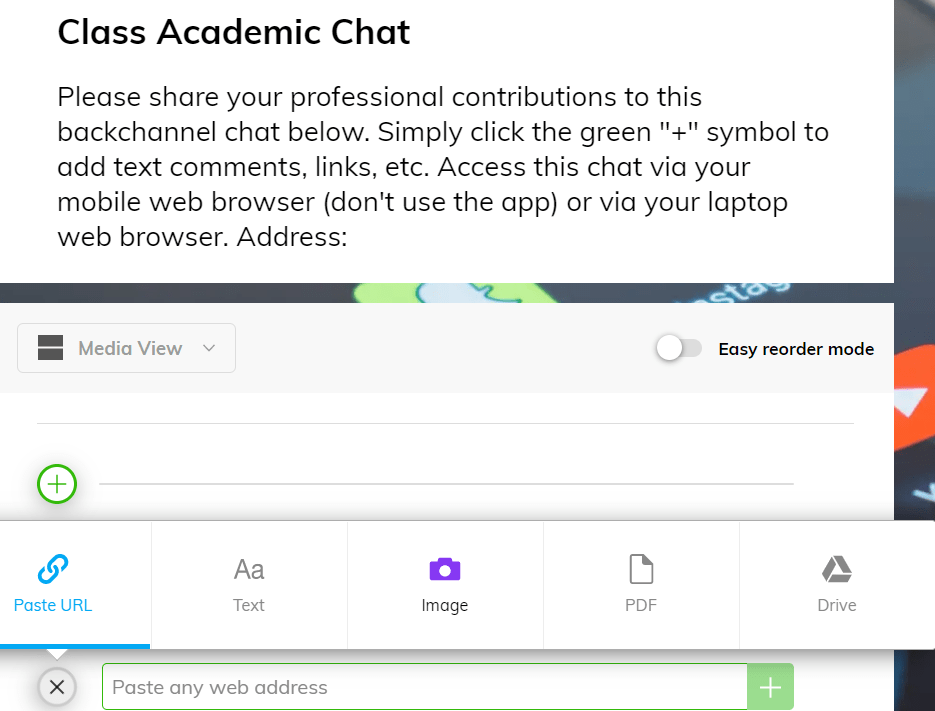
Step 2: Set the Visibility
Set the visibility of your Wakelet to unlisted, as shown in the image below.
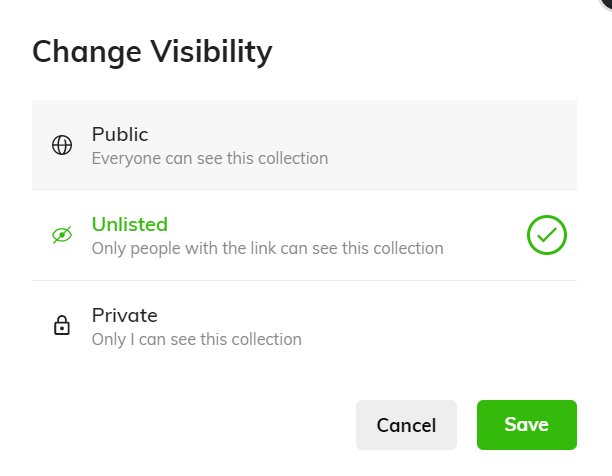
Step 3: Get the Contributors’ link or Code
Once you have your Wakelet ready to share, get the Contributors’ link. This link includes a special code you can share with others. This link, which is also available as a QR code, makes it easy to get your K-12 or adult learners into your class chat.
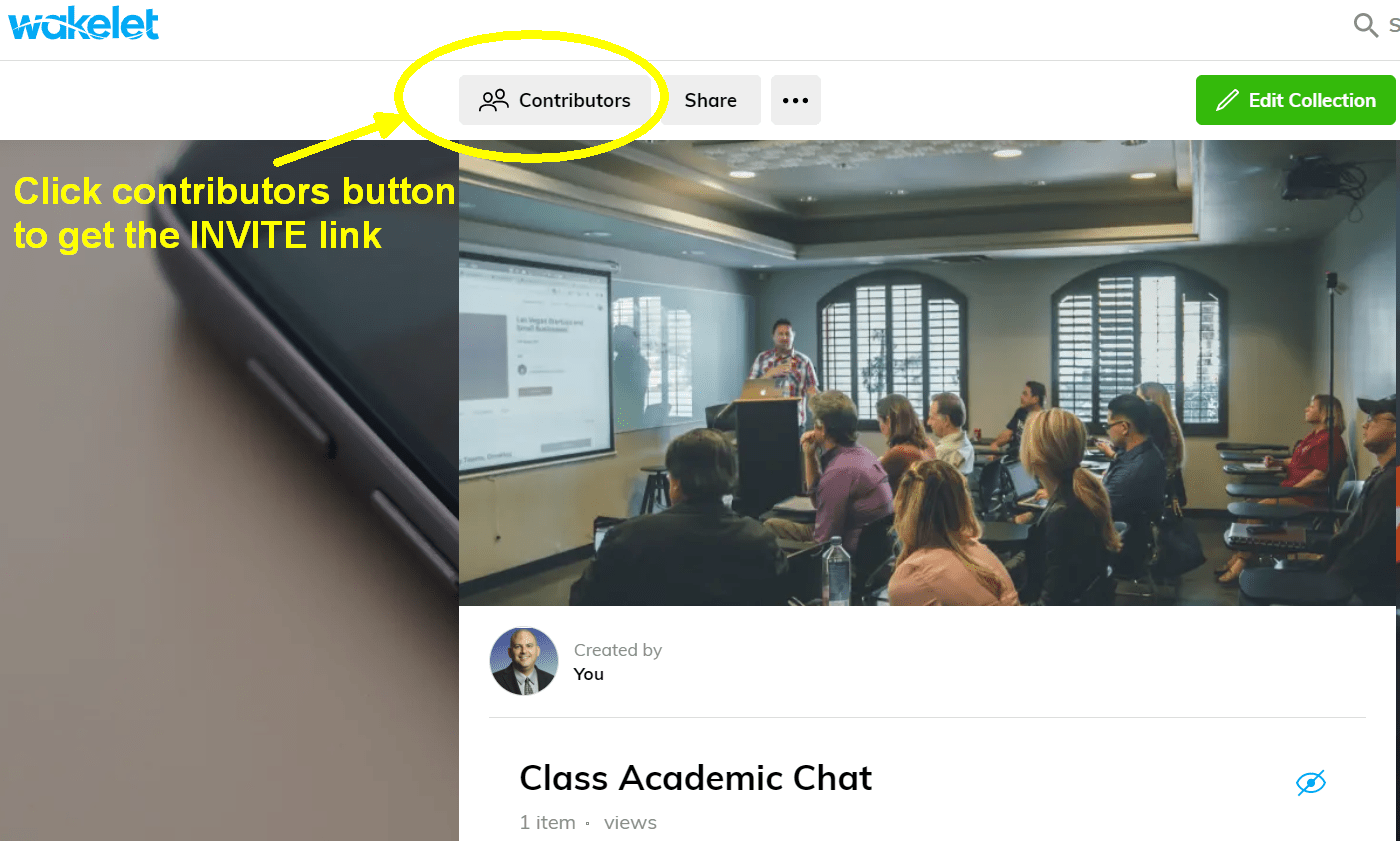

Note: If you are logged into Wakelet via your browser, you will not see the ENTER CODE. To get around that, either 1) log out of Wakelet, or 2) open an incognito/private browsing window. Also, if at any time you need to generate a new link and code (like I will with this particular chat), you can use the link shown.
Step 4: Invite Others
Instruct others to enter the code for your Wakelet, then enter their name, as shown below. If you are in an environment where sharing the link is difficult, ask learners to open up their browser. Then, have them go to the Wakelet.com page. At this point, have them click on ENTER CODE in the top right-hand corner of the screen.

Once learners click on ENTER CODE (as shown above), then they can enter the top secret access code that makes them into contributors, as shown below.
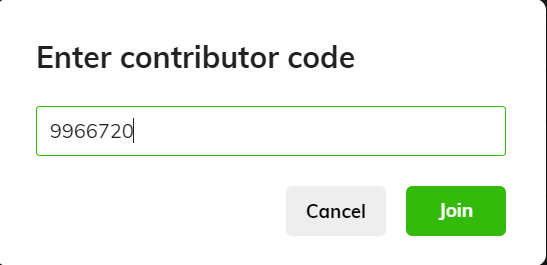
After selecting the JOIN button, then they will be invited to enter their name as shown below.
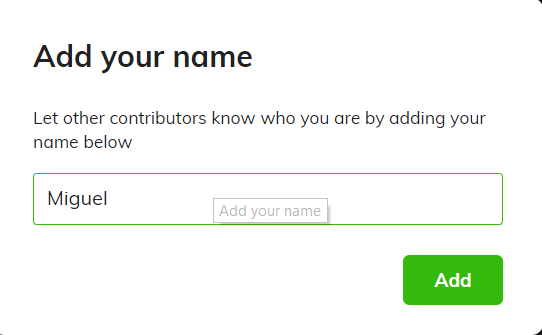
At that point, they are ready to begin adding content to the Wakelet Class Chat.
Step 5: Ask for Participation
Once your learners are in the Wakelet chat, they can click on the plus symbol. Each contribution displays the student’s name or the one they entered. Here’s what the add content bar looks like.

The plus symbol will empower them to do any of the following:
- Paste URL – You can ask students to replace the text imported from the website by having them enter their own rationale for adding the site or why it is relevant to the conversation.
- Text – Add text or contributions
- Image – Add an image
- PDF – If learners have a PDF document on their device, they can add it.
- Drive – Add content from Google Drive.
Isn’t that incredible? When done adding content, participants SAVE AND EXIT. This commits their changes to the class Wakelet, making them visible for all to see. If they want to add new comments, they can click on EDIT COLLECTION. This will let them add more remarks before they SAVE AND EXIT again. They can also choose to CLOSE out without making additions.
Now, one other neat feature is possible. Participants have the ability to add content, but cannot make changes. That is, they are unable to change the background images, the display of the Wakelet itself. Only you can do that as the organizer or teacher.
Tip: Once the content is in Wakelet, don’t forget that every text entry has the power of Microsoft’s Immersive Reader behind it. Yes, that means that text can be read aloud to students who need it.
Want to see it all in action? Watch this short YouTube video tutorial (alternate link) I made for you.
Curating Twitter Chats and Tweets
This aspect of Wakelet slipped past me at first. While I knew Wakelet had the ability to embed tweets into its flow as bookmarks, there’s more to it. As an instructional coach or facilitator, you need to curate content for K-12 or adult learners. And that content should include resources and ideas from the Twitterverse.
Capturing tweets is difficult, but Wakelet makes it easy. As you can see in the two images below, click the plus symbol and then the TWITTER button. Note that this content bar is different than what you see as a contributor when participating in a chat. You have MORE options available to you.

After that, you can add tweets from a particular hashtag or user. In the image below, you can see that one can multi-select tweets from a hashtag, in this case, #pblchat.
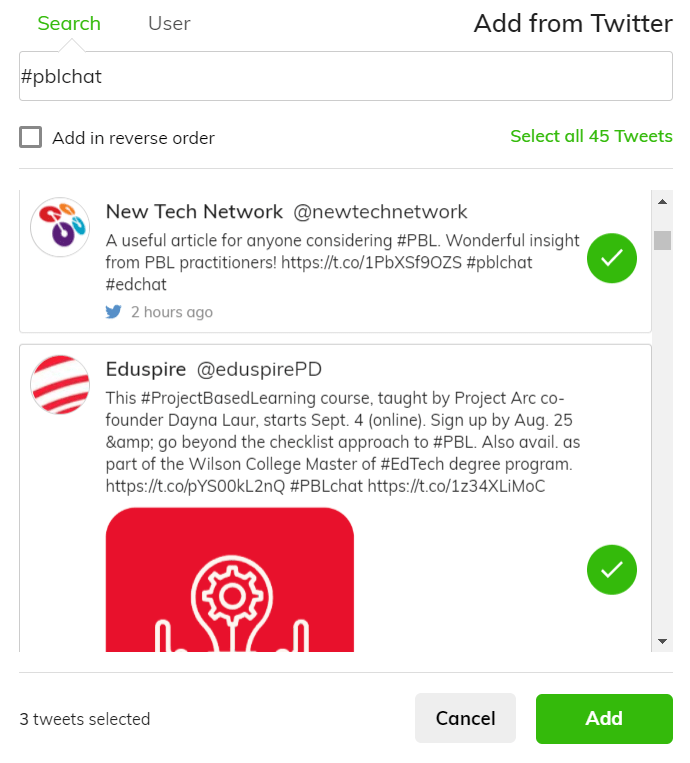
Wakelet to the Rescue
As you can imagine, Wakelet makes powerful options available to you. I hope you will find these two features worthwhile. I had not explored them until a recent conversation with Wakelet’s Misbah (@Wakelet). What a joy to learn about such awesome, free (no-cost) tools for educators. In addition to creating content-rich collections of curated goodness, you can use Wakelet for much more. Stay tuned as we continue our exploration.
Bonus Tip: Embed Content
Want to share your backchannel chat or twitter curation efforts on another website? Wakelet embeds easily into Microsoft OneNote, Google Sites pages, Google’s Blogger, and traditional websites. This makes it the perfect tool for capturing student insights and sharing. You can embed content by using the embed code Wakelet provides. Misbah also points out that you can print the QR codes to existing collections and then paste them into books, magazines, or around your campus to give people MORE information.
But wait, there’s more! Did you know that you can save Screencastify video recordings direct to Wakelet? Yes, it is easy to take those screencasts and drop them right into your favorite Wakelet through the Apps feature. Here’s a video overview of the options available:
*This post was updated September 4, 2019.

